The Key to Strength Training for Triathletes
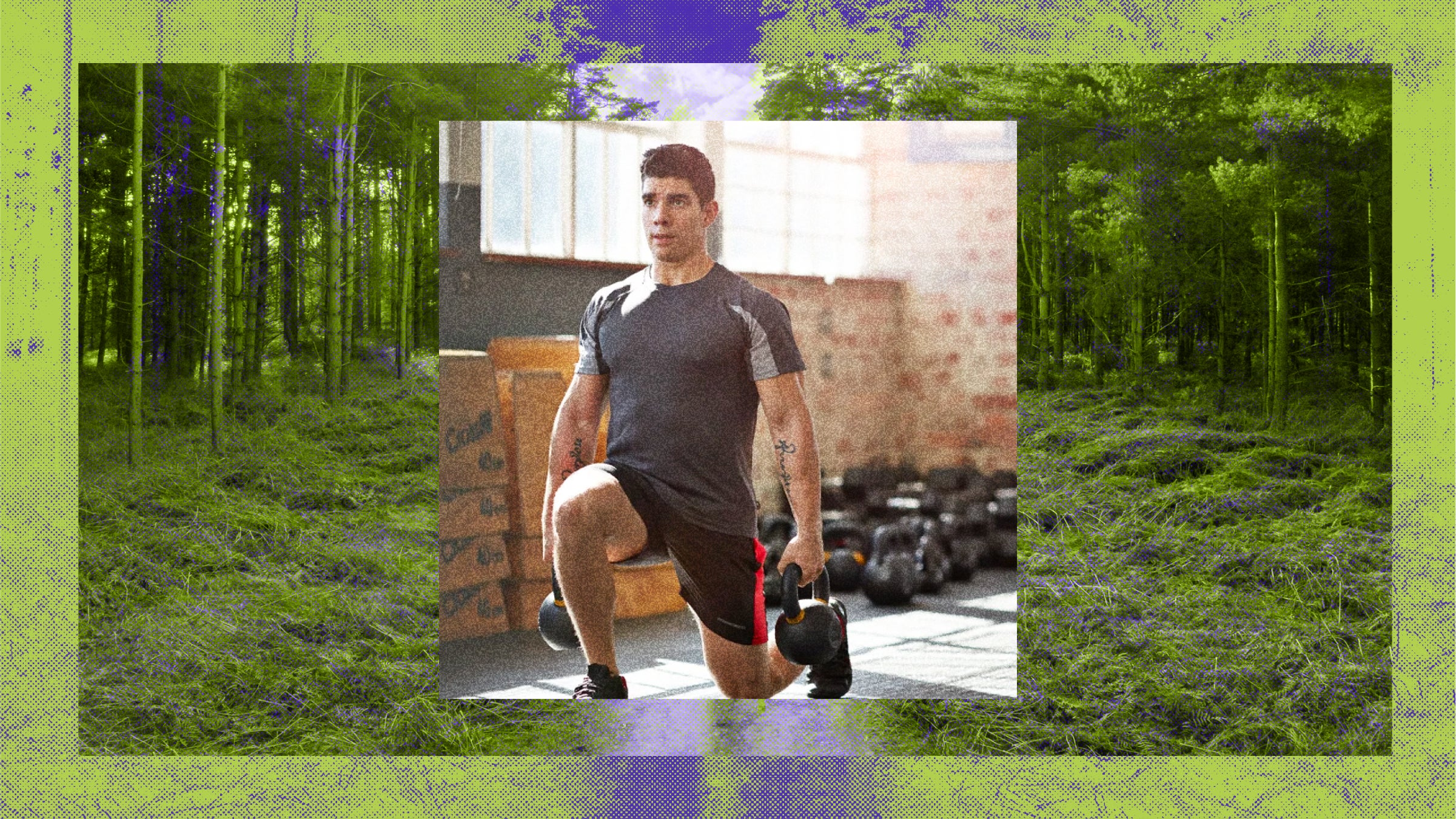
Strength training for triathletes doesn't have to be complicated. A few simple moves can go a long way in building a stronger, faster, more resilient triathlete. (Photo: Getty Images)
Thirty minutes is a mere 2 percent of your day, but that’s all it takes for successful strength training for triathletes. According to coach and physical therapist Stephen Weinmann, owner of Irish fitness franchise BikeRowSki, endurance athletes who don’t incorporate regular strength training into their workouts ultimately compromise their ability to produce their best muscular force.
Weinmann says that implementing low-weight, high-rep strength training ensures a triathlete’s musculoskeletal system can handle the regular cardiovascular efforts required on race day.
“This improves the body’s ability to sustain longer periods of work against levels of resistance just above [the athlete’s] current muscular threshold or ability—and will slowly but surely improve the ability to produce slightly more force, therefore bringing competition times lower,” he said.
“Every muscle group will be working during a race. We want to create a full-body training program so that a triathlete will improve their ability to produce sustainable power,” he added.
Looking for even more resources? Check out our guide to Strength Training for Triathletes.
Why Is Strength Training for Triathletes Important?
Regardless of the discipline and focus, every season the goal is the same: to get better. So, with that goal in mind we can easily identify why it is that strength work for triathletes is an important part of structured training:
- Injury Prevention: This is the most common reason given for performing strength exercises. A consistent dose of strength work can help to increase bone density, maintain muscle mass and protect vulnerable joints from injury.
- Become Well-Rounded: While the goal is always to become better at the specific sport you’re focusing on, the goal should not be weakness outside of that sport. There’s value in being an athlete, instead of just a cyclist, runner or swimmer. Feel your best no matter what you’re doing.
- Increase Power: Strength training, especially with weights, increases slow-twitch muscle fiber. Slow-twitch muscle fibers don’t produce lactic acid at the rate fast-twitch muscles do, thus allowing you to produce more power for longer. High lactate threshold equals more power.
- Better Form and Body Mechanics: Strength exercises are great for correcting imbalances in our bodies. Better posture, and overall body alignment can be achieved with continued and consistent strength work.
- Equal Power Delivery: Whether it’s your pedal stroke or running gait, strength work helps athletes deliver more even and consistent output to the ground or pedals. This improves efficiency, which helps improve an athlete’s resistance to fatigue.
Strength Training for Triathletes 30-Minute Set
Check out Weinmann’s 30-minute strength training for triathletes set. These exercises will help you build the muscular endurance you need for triathlon. Rest for 30 seconds between each move, rest for two minutes at the end of the set, and repeat four times.
Straight-Arm Standing Lat Pulldown
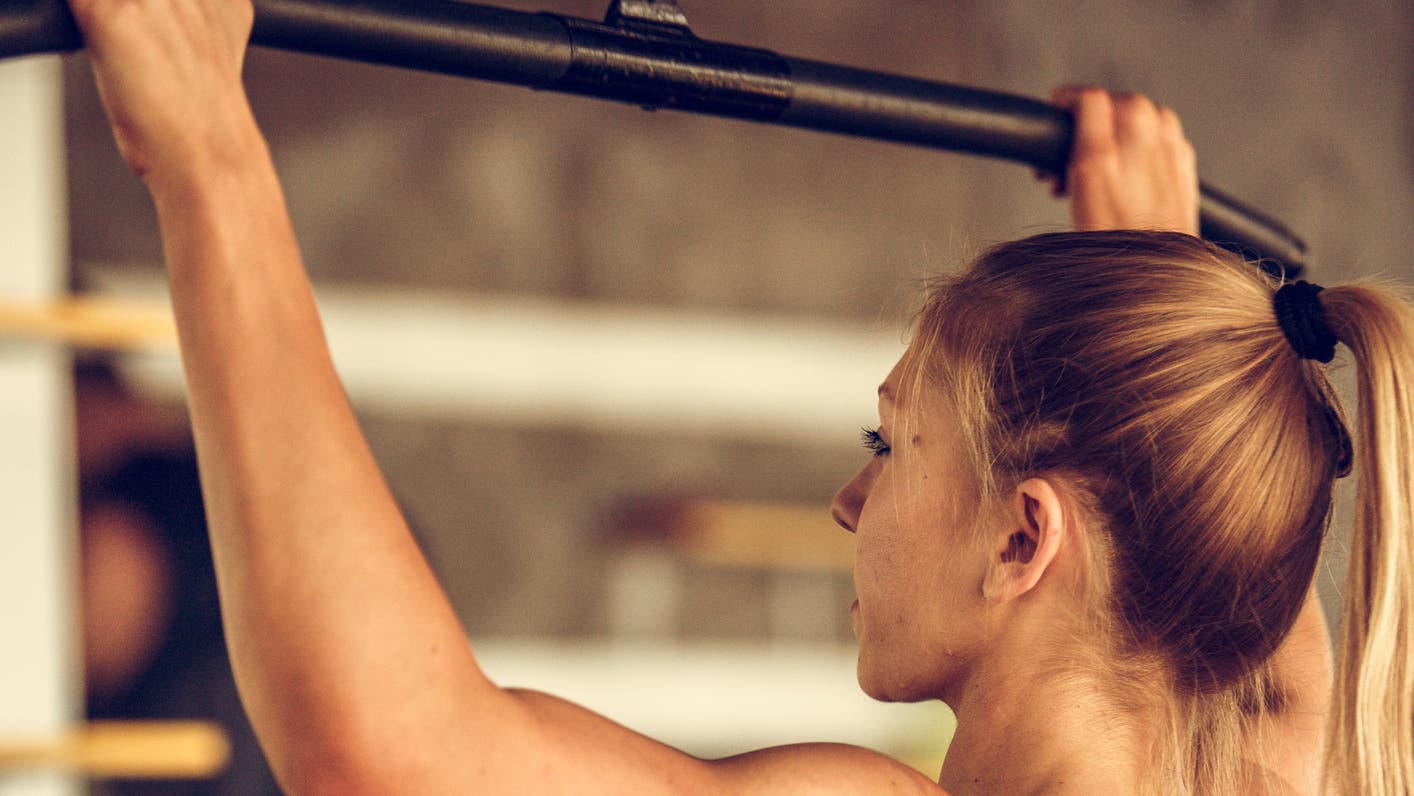
Stand facing the lat pulldown machine, gripping the bar with both hands at arm’s length. Bracing your midsection and engaging your glutes, press the bar down to hip level. Pause for one second and take three seconds to slowly return. Complete 12 reps of 25-35 lbs.
Alternating Dumbbell Bench Press
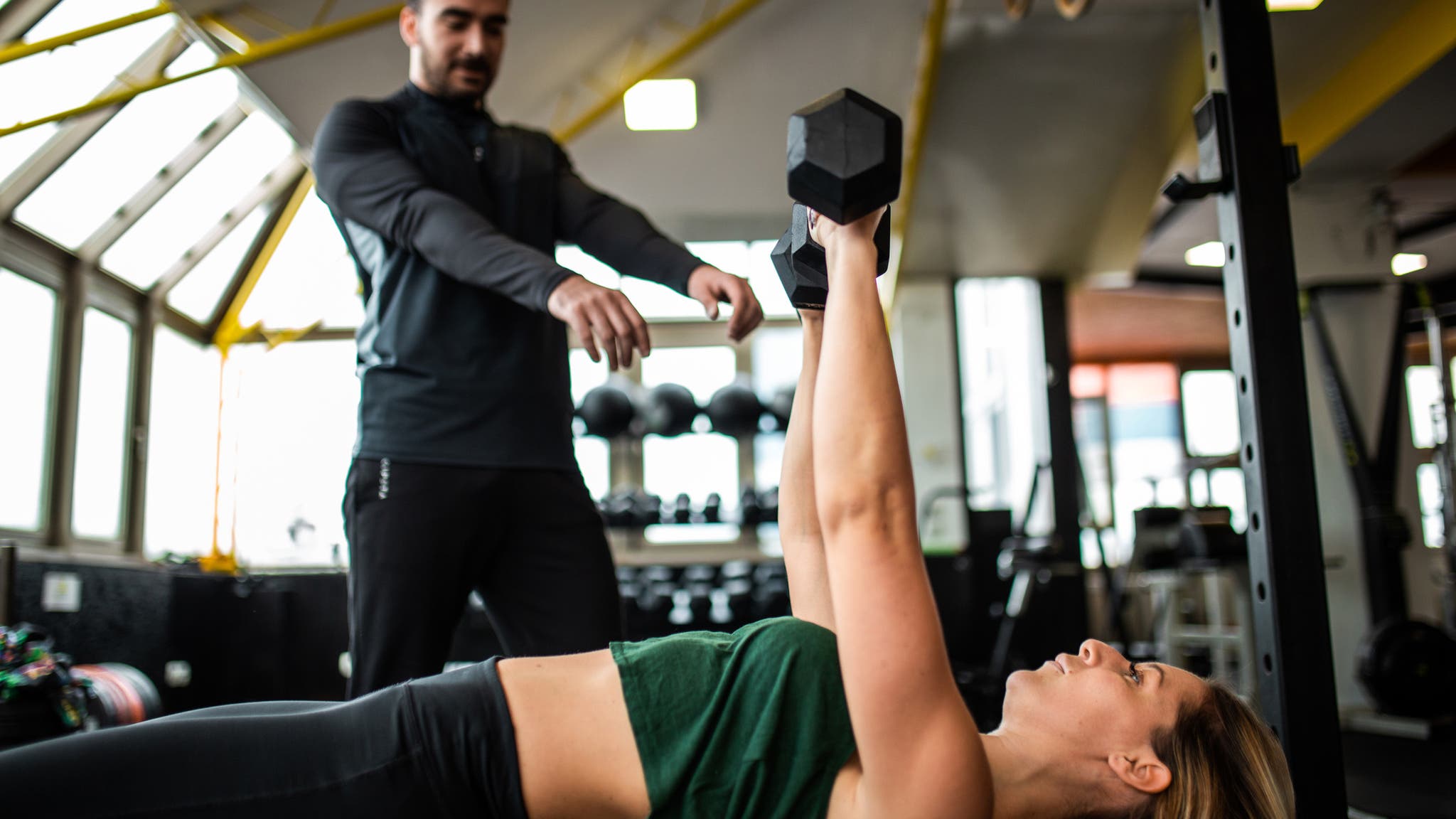
Lie on bench with arms fully extended holding dumbbells. Lower one dumbbell for three seconds to chest level, leaving the other arm extended. Raise back to start position for one second. Alternate on both sides for 20 reps each of 15-20 lbs.
Bench-Supported Dumbbell Bent-Over Single-Arm Row
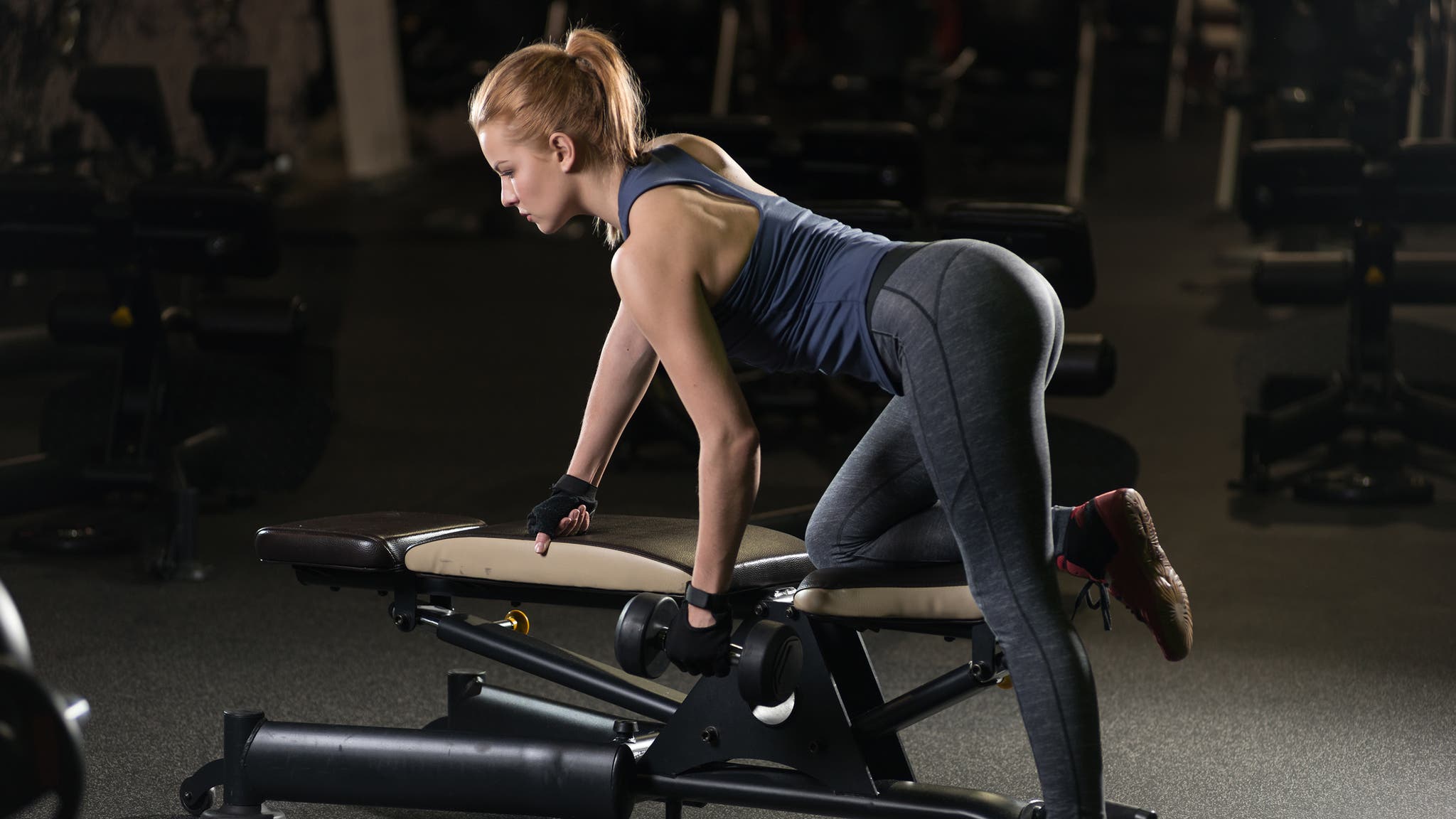
Place both feet on the floor, bend over and push your hips back, placing a supporting hand on the bench. Keep your chest up, chin tucked and back flat with a slight knee bend. Grip a dumbbell, keeping your elbow close to your side, and row the weight up to ribcage. Complete 12 reps on each side of 20-30 lbs.
Dumbbell Walking Lunge
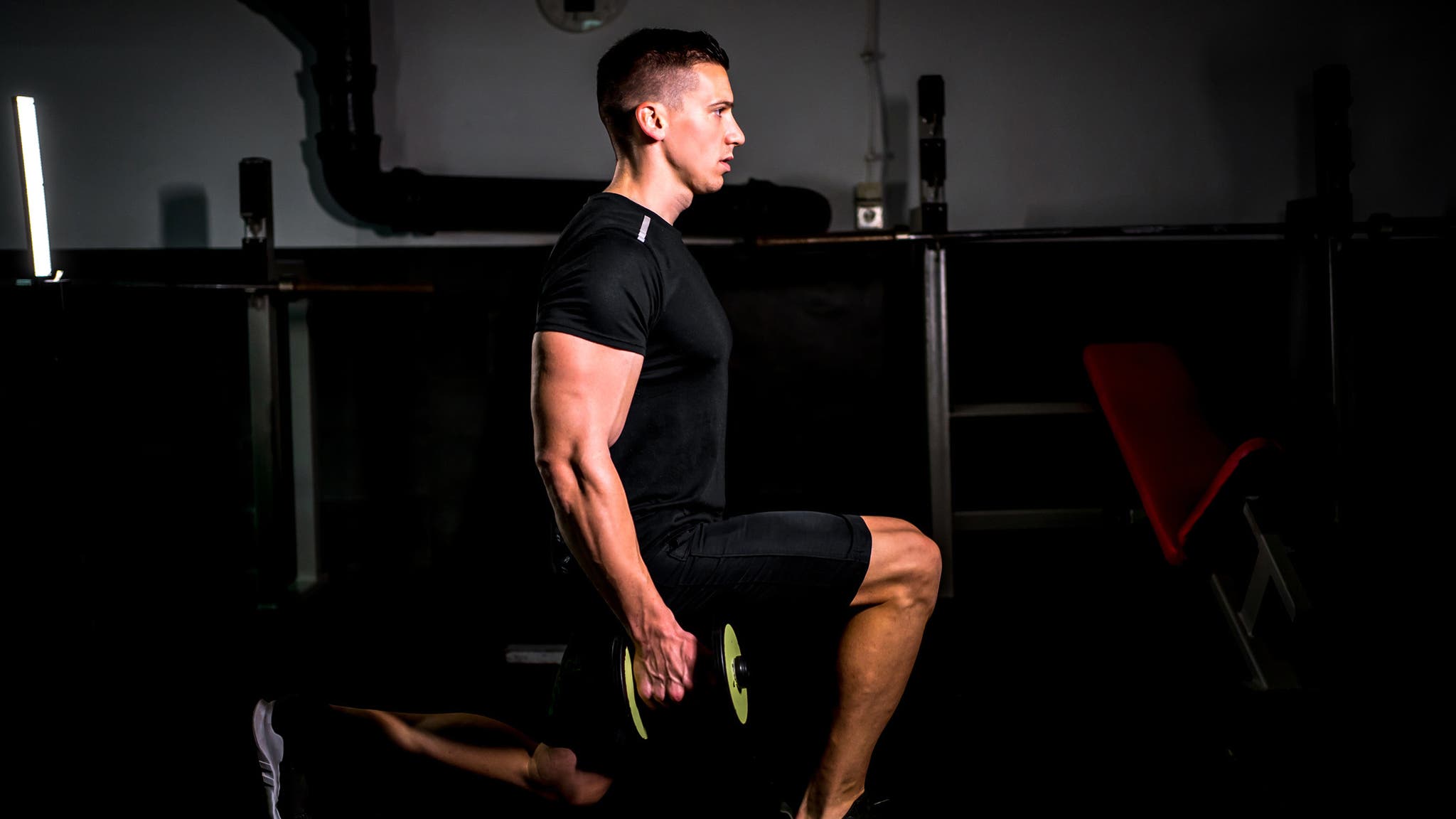
Holding a pair of dumbbells by your side, step forward to lunge, keeping your chest up, core engaged, and leading knee behind your toes. Allow your trailing knee to kiss the floor, pause, then push forward up to standing. Alternate for 24 reps each of 15-25 lbs.
Side Plank

Lie on your side with legs and feet stacked. With your forearm flat on the floor, push yourself up into a straight line—keep squeezing your glutes, and brace your core. Hold for 30 seconds on each side.
Strength Training for Triathletes Tips
Making strength training a priority is the first step for triathletes, and then from there it’s a matter of honing in on how it can directly help your performance in training and out on the race course. Here are a few more tips to keep in mind as you add a strength training for triathletes program into your plan.
1. Your Strength Training During the Off-Season and In-Season Will Look Slightly Different
In addition to low-weight, high-rep session like the one outlined above, during the season, prioritize mobility and balance, and do multi-joint and coordinated movements. As top trainer Kate Ligler puts it, “playing catch-up with strength training is a risky in-season move.” So if you’ve never strength trained before and you’re in the middle of the season, keep it simple focus on the basic elements Ligler lays out here. If you want to explore new types of strength training, like lifting heavy, do it during the off-season. Then as you build back into the new season, keep it as part of your routine so you don’t have to start from scratch again.
2. Be Mindful of Your Race Schedule
While regular strength training is almost always a good idea, be sure to be cautious as important races approach. Just like you cut back on overall training volume, you’ll want to cut back on moves that can leave you sore or fatigued. And just like endurance training, you won’t lose that fitness right away. In one study, runners who stopped their strength training retained the benefits for four weeks, and got faster.
3. Stop with the Excuses
It’s really easy to come up with a reason not to strength train. Here, Dr. Rick Kattouf lays out five of the most common excuses he hears. Don’t convince yourself you’ll get bulky or whine that it’ll impact your ability to do your other training with energy. Also, yes, you do have time. If your excuse is that you don’t have time, here’s a session you can do in front of the TV.
4. Learn the Fundamentals
In addition to ensuring that you’re using proper form for all moves (this is a must), learn about the basics of building a quality strength training program. Trainer Kevin Purvis lays out how to do exactly that here.
5. Always Do a Proper Warm-Up
You don’t dive into a track session without warming up and the same goes for picking up a dumbbell. By skipping your strength training warm-up, you are limiting the effectiveness of the workout and potentially setting yourself up for injury. Find a five-minute warm-up from trainer Kyle Herrig here.
More Strength Training for Triathletes Routines
The 30-minute session laid out above is one of many strength workouts triathletes can do. If you’re looking for a more thorough plan to get jumpstarted try the workouts below. If you’re in the midst of a big training block, hold off on something this complex until you get past that goal race.
Put Some Ping in Your Spring!
Strong Back
Get Outside
Endurance-Focused Routine
These Micro Exercises Will Give You Big Gains
A Single-Limb Strength and Stability Session
This Mobility Circuit Will Keep Your Hips Healthy And Moving Well
The Pros’ Go-To Bike-Specific Strength Workout
4 Strength Moves to Help You Run Better Off the Bike
Taylor Thomas and Liz Hichens contributed to portions of this article.